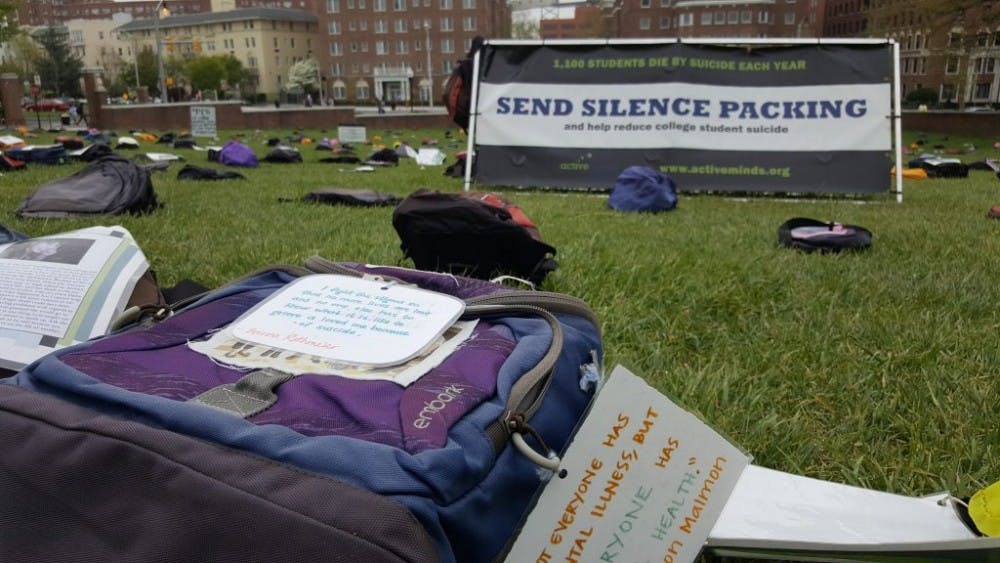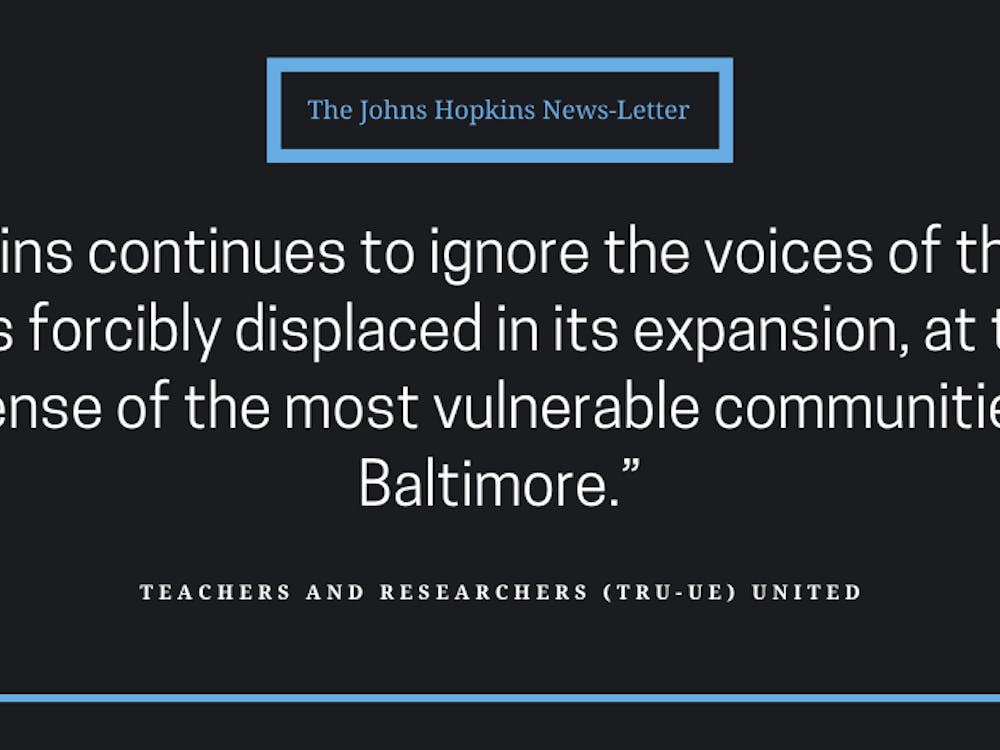The Hopkins chapter of Active Minds held Send Silence Packing (SSP) to commemorate the 1,100 college students who commit suicide every year. The organization placed backpacks on the Beach on April 21 to represent those who have taken their own lives.
Hopkins is the eighth school visited by the organization this spring during its 11-college tour in the southern United States.
Stories from the people who had experienced the loss of a loved one due to suicide were attached to the backpacks. Signs on the Beach accompanied the backpacks that read, “We may often suffer in silence, but we do not suffer alone,” “Never be afraid to ask for help” and “I am alive today because my parents and friends saw depression signs and got me help.”
Casey O’Neill, a road staffer for SSP’s spring tour, said that the backpacks are intended to display the pervasiveness of college suicide.
He described what had originally inspired SSP.
“The inspiration for this event came from the famous AIDS quilt that was in D.C. and all throughout the globe,” O’Neill said.
John Hughes, the president of Active Minds’ Hopkins chapter, said SSP’s purpose was to generate awareness and break down the stigma surrounding mental health issues and suicide, some of which are specific to the Hopkins community.
“There’s quite a bit of stigma. There’s also quite a bit of flippancy. I don’t think people take mental illness very seriously on this campus. When people talk about how stressful their academics are or how much trouble they’re having, it becomes almost like a joke and a competition of one-upmanship which really isn’t a good way to handle it at all,” Hughes said. “Also there’s some of that standard stigma, when people are surprised that their friend went to the Counseling Center, ‘Oh that person went to the Counseling Center, what’s wrong with them?’ But mostly it’s that people don’t take it seriously.”
Active Minds Secretary Emily Nordquist explained the emotional significance of the backpacks.
“They’re supposed to add a personal touch to the whole display. I’ve talked to people who were here earlier in the day, and they said it’s been really emotional, obviously, but they were happy to see the display because it’s something that’s important to talk about even though it’s hard sometimes,” she said.
Sophomore Daniela Barrio emphasized the prevalence of mental health disorders both at Hopkins and at other universities.
“One in four college students is affected by a diagnosable mental disorder, so it’s not just something that affects Hopkins,” Barrio said. “A lot of people here do suffer from depression or generalized anxiety disorder... People who were here last year know that someone from our own community took their life last year. It is something that is pertinent to our community that we need to de-stigmatize and start a conversation [about] here on campus.
Sophomore Su Ataman thought the event succeeded in raising awareness about college suicide.
“It really hits home to not just me but to a lot of people, especially reading stories that say that this is the backpack that someone used in college before they lost their lives to suicide,” she said. “It is really a good reminder, even to those not considering suicide or have any kind of suicidal ideation that there’s always help and that seeking help is not a weakness but a strength.”
Sophomore Dorothy Chen cited the heightened sense of expectations and competition found at Hopkins.
“It’s really heartbreaking, and it’s touching at the same time to read all the stories they have posted here,” Chen said. “There’s a lot of stigma, but it’s more concentrated in certain groups, especially here at Hopkins because everyone’s so pressured to be perfect: to get that 4.0 GPA, do 5,000 activities and do 20 hours of lab research a week. Everyone tries to maintain this façade that they’re competent and making it look like they have their life together, and no one really talks about these things.”























Please note All comments are eligible for publication in The News-Letter.